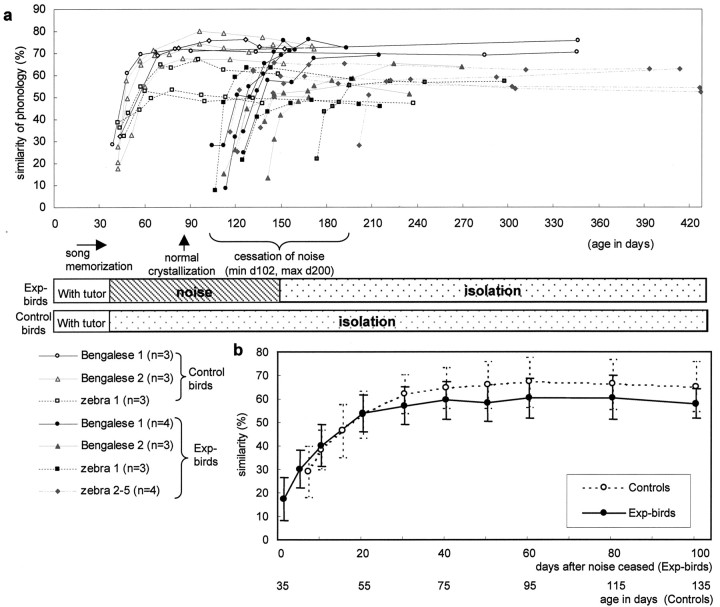Figure 4.
Time course of changes in similarity in syllable structure. a, All the birds in both control and experimental groups were reared by their biological (zebra finch) or foster (Bengalese finch) parents until 35 d of age. Then, the control birds were individually isolated to develop their song from memory. The Exp-birds were exposed to continuous broadband noise in individual sound isolation boxes between 35 and 129 ± 27 d of age. After their release from the noise, all of these birds developed syllables resembling the tutor model. Open symbols show the similarity score at each sampling day in the controls, and closed symbols show that in the Exp-birds. The same symbols and lines are used for multiple pupils raised by the same tutor, including two Bengalese and five zebra finch tutors. b, Summary of similarities in syllables. This figure plots the means and SDs of the curves in a to show the general trends. Although the Exp-birds had a lower mean similarity at the time of song crystallization than the controls, the similarity increased at almost the same rate as in the controls.

